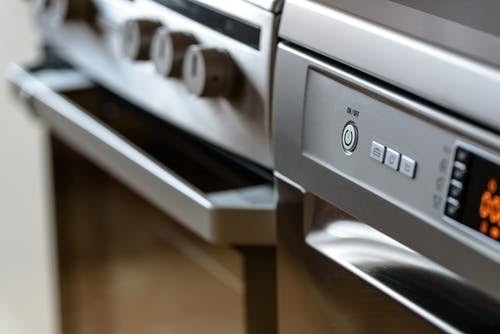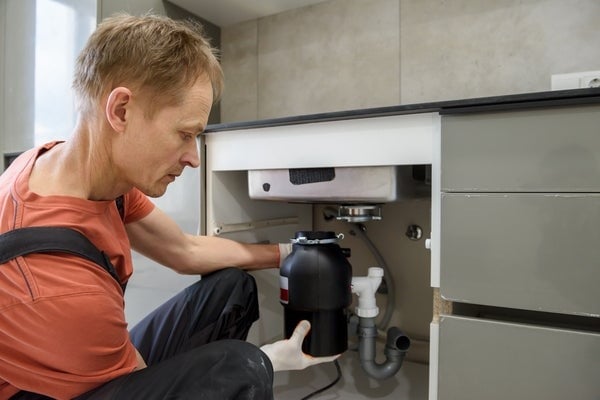Common Trash Compactor Problems and How to Fix Them

Your trash compactor is one of the most underappreciated appliances in your home. Learn how to detect and fix some of the most common problems.


Your trash compactor is one of the most underappreciated appliances in your home. Learn how to detect and fix some of the most common problems.
Your trash compactor can make dealing with household waste so much easier, but not when it isn’t working properly. Few things are more frustrating than having your trash compactor or other garbage disposal system go on the fritz.
These solutions to common trash compactor problems can help you fix the issue yourself to save time and money.
Your Compactor Is Making Weird Noises
If your trash compactor has started making loud noises, like banging, thumping, squealing or whining, the problem may be the drive gear. Turn off power to the unit, then remove the bottom cover to locate the drive gear, which has plastic teeth. Breakage or wear on these teeth could mean it’s time to replace it. Check for damage to the power screw sockets, the motor gear and the chain while you’re at it. The motor gear, which is connected to the drive shaft, also has plastic teeth which can break. Make sure to check that the chain has the right amount of tension — about half an inch of deflection — especially if you are replacing it. Lubricate all gears before putting your trash compactor back together.
Banging, crashing or whining noises could also be the result of a faulty directional or top limit switch. This switch can be found inside the top of the unit. Shut off power to the unit, remove it from your cabinet if it's built-in, and unscrew the top panel. Verify that the tab on the ram is positioned to activate the switch lever. Use a multimeter to check the switch for continuity. When activated, the switch should have no continuity; if it does, replace it.
If that’s not the problem, place the ram in the top position, and check the power nuts. Tape the switch in place to keep it from breaking while you perform this check. If you can’t move the ram to its top position, place the unit on its side and take off the bottom panel. Check the power nuts for damage, then lubricate them.
Your Compactor Won’t Start
A trash compactor that won’t start may have problems with the start switch, the drive motor, the foot pedal or the directional switch. Locate the start switch behind the control panel if your compactor powers on via a button on the control panel, or in the drawer if it powers on via foot pedal. Make sure the contacts on the switch are undamaged and are not corroded. If you have a foot-pedal-activated compactor, make sure it’s lined up right to activate the switch when pressed. Consult your compactor’s wiring schematic and use a multimeter to check the continuity of the switch; it should show continuity when activated, but not when at rest.
To check your compactor’s drive motor, shut off power to the unit and remove it from the cabinet. Take off the bottom panel and disconnect the wires from the motor, taking care to remember which wires hooked up to which terminals. Use your multimeter to check for continuity in the centrifugal switch and the motor windings. The readings should show almost no resistance in the centrifugal switch and a few ohms of resistance in the motor windings.
Check the directional switch by removing the top panel to find it, as described above. Consult your unit’s wiring schematic to determine which terminals to test for continuity. Usually, terminals C and NC should have continuity when not activated, and terminals C and NO should have continuity when activated.
If your compactor turns on via foot pedal, pull out the drawer and make sure the foot pedal mounting screws are tight. Check that the activator lever is coming into contact with the switch.
The Ram Gets Stuck
If the ram is stuck in a down position, open the bottom panel and check the drive gear. Make sure that the chain has the appropriate half-inch of deflection. If there are no problems with the drive gear, check the directional switch. You can lay the unit on its side and manually turn the drive gear to raise the ram. You can remove the top panel and the ram mounting brackets to remove the ram from your unit. Check the switch terminals for continuity and make sure that they aren’t stuck open or closed. They can become welded open or closed over time.
With the ram in an up position, check the power nuts for damage. These are located on the sides of the ram. Replace them if they are worn or broken, and lubricate them before reassembling your compactor. Take care not to break the directional switch while manipulating the ram; it’s a good idea to tape it, as it can break easily.
Learn more about how an AHS home warranty can cover your garbage disposal.

It Keeps Running After the Cycle Ends
If your compactor keeps running after the cycle ends, it could need a new top limit/directional switch or a new start switch. Locate these as described above, and use your unit’s wiring schematics to check their continuity with a multimeter. The top limit/directional switch should have no continuity when activated. The start switch should show continuity only in the start position, but it may show continuity in the off position too, if it is defective.
It Won’t Stay On to Complete a Cycle
If your trash compactor won’t stay on long enough to complete a cycle, you may need to check and replace the top limit/directional switch or the drive motor. The cycle selector switch could also be the issue. The cycle selector switch is located on the control panel. You will need to remove the unit from the cabinet and check its wiring schematics to determine which terminals to check for continuity. If there is no continuity when the switch is set to normal, you should replace it.
We’ve already discussed locating and testing the top limit/directional switch. To locate and remove the drive motor, take off the bottom panel and the bolts on the motor mounting plate. Loosen and remove the drive chain, motor gear and drive gear. Disconnect any connecting wires from their terminals, as well as the wire harness connector. Then take off the motor mounting bolts and remove the motor itself in order to replace it.
The Drawer Won’t Open or Won’t Stay Closed
When your trash compactor’s drawer won’t open or won’t close, usually it’s a problem with either the drawer rollers or the foot pedal. The drawer rollers may have become damaged or warped, or they may simply need to be greased. To check them, lift the drawer out of its opening and inspect the rollers for damage. If they need to be replaced, you may need to use a socket to take off the hex nuts securing the drawer frame. You may also need to remove the unit’s feet. Make sure your rollers are well-lubricated before reassembling your unit.
If the rollers look good, check the foot pedal mounting screws. Tighten them if they are loose. Inspect the foot pedal and drawer catch for damage, and ensure that the foot pedal is aligned to come into contact with the drawer catch.
Sometimes, fixing your own appliances is just too much trouble, especially when you’re busy with work, kids, friends and hobbies. American Home Shield can help. Our home warranty coverage options are designed to make it easy to fit repairs into your busy life. Call us today and get the help you need to repair and maintain your home’s systems and appliances.
AHS assumes no responsibility, and specifically disclaims all liability, for your use of any and all information contained herein.
Have a plan for your home when things don't go according to plan
Shop Home WarrantiesStaging